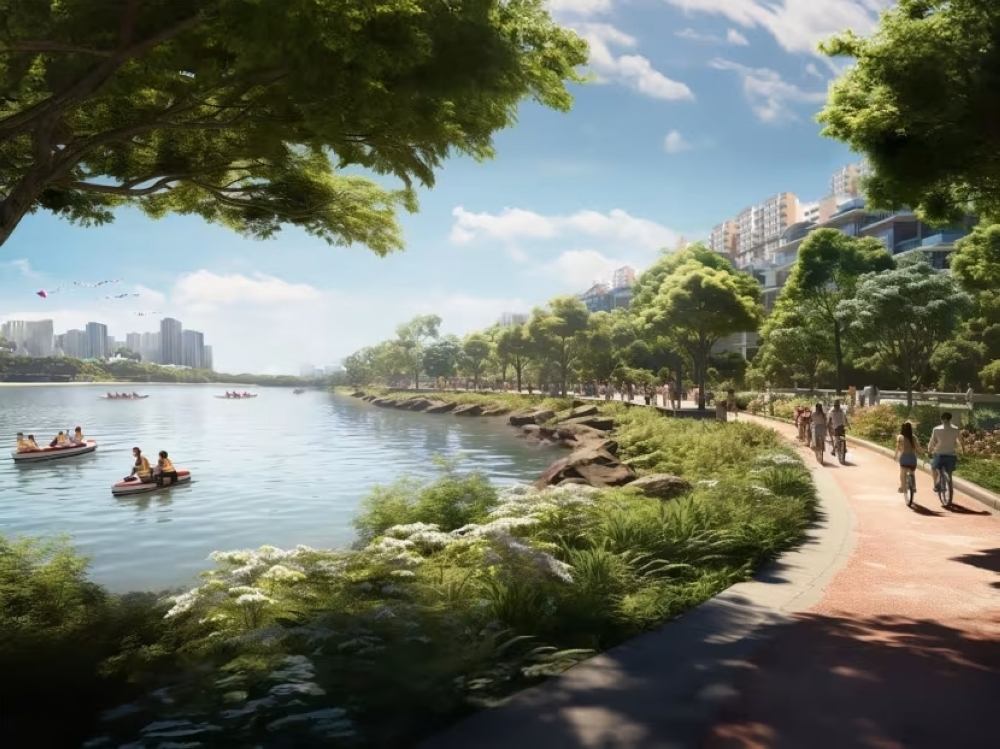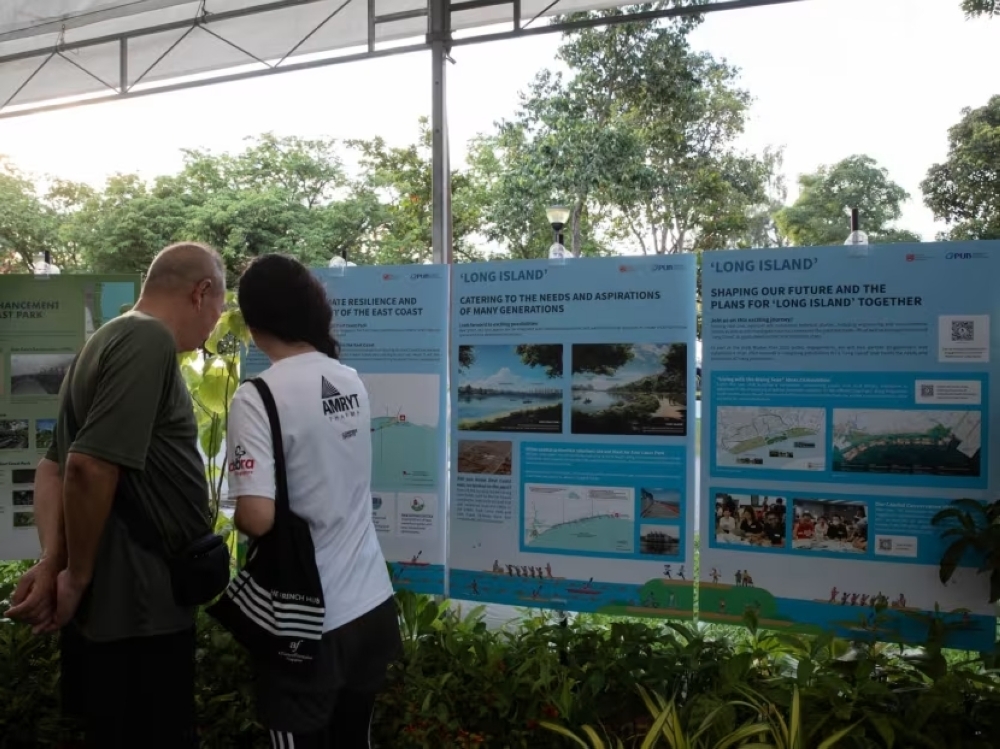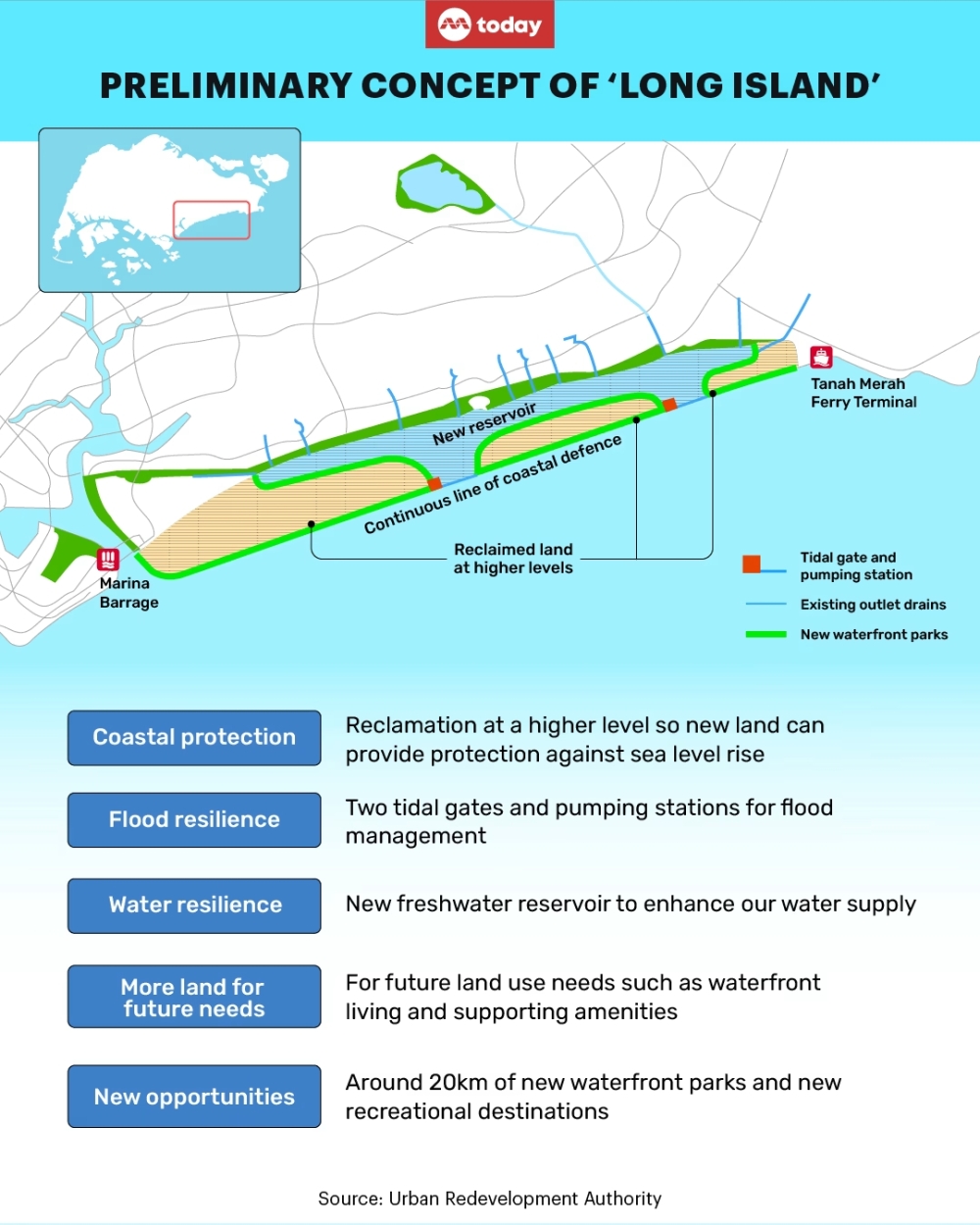SINGAPORE, Nov 30 — Before plans are finalised to reclaim a land area twice the size of Marina Bay off Singapore’s eastern coast to counter the effects of rising sea levels, National Development Minister Desmond Lee said on Tuesday (November 28) that technical studies will have to be done first.
The reclamation project dubbed “Long Island” was an idea presented decades before in the 1991 Concept Plan by urban planners and highlighted again in recent years such as during the 2019 National Day Rally and at an exhibition by the Urban Redevelopment Authority last year.
Details unveiled on Tuesday by Lee and his ministry showed that the reclaimed area will be about 800ha and may encompass a freshwater body that can become Singapore’s 18th reservoir.
Expected to take several decades to realise, it will be preceded by a comprehensive study of about five years starting from next year, with a public consultation held concurrently.
TODAY takes a deeper look at the main areas that the studies would cover, the potential challenges that may arise in carrying out the project, and the possible impact it might have on residents living near the area.
What are the factors to consider?
1. Deeper waters
Civil and environmental engineering professors Koh Chan Ghee and Yong Kwet Yew from the National University of Singapore (NUS) said that this reclamation project will be done in deeper waters compared to past reclamation works done along the East Coast stretch.
Prof Koh, who is also director for research at the Coastal Protection and Flood Resilience Institute Singapore, said that there would therefore be a need to develop cost-effective technologies for this.
Expressing confidence in Singapore’s capability to take on such a project given its past experiences was Professor Adam Switzer from Nanyang Technological University (NTU).
The professor of coastal science at NTU’s Asian School of the Environment said: ”This isn’t Singapore’s first attempt at large-scale coastal reclamations. Changi Airport, the Marina Bay area and the new Tuas Port stand as recent testaments to the ability of Singapore to reclaim new land from the sea for its people.”
2. Costs and resources
Given the large scale of the project, the experts said that costs and resources poured into the endeavour must also be examined.
A statement in January from the Ministry of National Development’s website showed that the price tag varies from project to project.
“The cost of land reclamation projects completed in the last 10 years ranges from around S$270 to S$850 per square metre,” it said.
Long Island is expected to be about eight million square metres.
Prof Yong of NUS, who also chairs the Coastal Protection Expert Panel of national water agency PUB, said: “The most cost-effective reclamation methods involved the construction of a containment system (bund or walls) and filled with soil, preferably sand.”
However, Prof Koh said that there are limits to sand importation.
For instance, due to environmental concerns, Indonesia had banned sand exports to Singapore in 2007 and Malaysia did the same in 2018.
“Research on using recycled excavated soils from infrastructure projects may lead to a win-win solution, meaning the disposal of excavated solution and its use as the reclamation fill,” Prof Koh added.
“The land excavation cost can be recovered or offset by the returns of the multi-functional use of the reclaimed land when completed.”

Are there environmental concerns?
A reclamation project of such a scale would disrupt ecosystems while causing a loss of habitat and biodiversity, some environmental experts said, adding that there may be some lasting impact.
Stephen Beng, chairman of ground-led environmental initiative Friends of Marine Park, noted that decades of reclamation and development work have contributed to the loss of 60 per cent of the coral reefs around the island.
“We’ve also seen that life on our reefs and shores does return when given a chance, although some changes and losses cannot be reversed,” he said.
“While we’ve come this far to include conservation considerations in development plans, we must not get comfortable with the ability to reclaim and restore.”
Beng is of the view that the five-year study should not be merely looking at identifying threats and risks to minimise harm, but should also take it one step further to “yield positive impact and net gains”.
Agreeing, Professor Benjamin Horton, a professor in earth science at NTU’s Asian School of the Environment, said that if done right, reclamation “can be done safely and with minimal — and even positive — impact”.
Prof Horton, who is also director of the Earth Observatory of Singapore, added: “Over the last few decades, concepts like ‘working with nature’ have been introduced, whereby the developments are designed based on natural principles that mimic nature, to identify win-win opportunities to create new environments that can enhance the project and create multi-purpose developments.”
Beng said that there is an opportunity to build up living space in a better manner by taking a “nature-first” approach, such as by providing sufficient depth for mangroves and allowing natural accumulation of sediments for sandy beaches and rocky shores.
“How we treat nature and steward our ocean resources now will define us as a people,” he added.
Why reclamation and not other solutions?
If the potential challenges that need to be examined are addressed and done correctly, Long Island can potentially fulfil not one but multiple needs for Singapore in the future, said experts.
Prof Yong of NUS said that it makes “pragmatic economic sense” to take on this multi-functional development to tackle the long-term needs of protection against sea-level rise as well as land needs.
“It follows that if there is no need for future land use in the East Coast area, the coastal defence for the eastern coast may take a different, perhaps simpler form,” he added.
When Prime Minister Lee Hsien Loong delivered the 2019 National Day Rally, he referred to poldering as an option, using the example of what the Netherlands does. Singapore is now doing so in Pulau Tekong.
Poldering is the process of enclosing an area in the water and pumping out the water in the enclosed area to create dry land.
An alternative would be reclaiming a series of islands offshore and connecting them with barrages, creating a freshwater reservoir — a solution that “will make PUB very happy”, the prime minister said then.
Chuck Kho, executive vice-president for engineering at architecture and engineering consultancy firm CPG Consultants, talked about other benefits that can be achieved such as flood and water resilience, the creation of more waterfront for outdoor recreation spaces as well as providing land choices for future generations.
On Tuesday, Desmond Lee also touched on a possible alternative of building a 3m-high sea wall behind the existing south-eastern shoreline.
However, this would require placing 12 tidal gates and pumping stations that would take up significant space around the size of 15 football fields, thereby forfeiting existing greenery and recreational facilities at the park.
How may residents be affected?
Should the extensive studies turn out positive and actual works to create Long Island eventually go ahead, some degree of disruption to nearby residents can be expected, the experts said.
Prof Koh of NUS said given that the construction activities are mainly in the seawater away from the coastline — as opposed to other projects such as roadworks or the building of MRT lines — the impact on residents “would be minimal”, especially with good planning and community engagement.
Lee Sze Teck, senior director for data analytics at real estate firm Huttons Asia, likened Long Island to the Kallang-Whampoa area.
“There is potential to build between 30,000 and 60,000 homes with a good mix of greenery as well as commercial and recreational uses,” he said.
He and another real estate analyst Nicholas Mak, the chief research officer at property technology firm Mogul.sg both said that the housing developments on Long Island will be a good mix of private and public housing, given the Government’s emphasis on building inclusive neighbourhoods so that the population, no matter their income levels, may get to live in prime districts.

The experts said that even after the land reclamation is done, it would be a long while before the skylines of southern Singapore begin to transform.
Dr Tan Tee Khoon, country manager for Singapore from property technology firm PropertyGuru, said: “Land reclamation will also take at least a decade for the soil to settle, so we will probably see little development in the near future.”
Some residents from the East Coast area told TODAY before that they were concerned about possible traffic congestion as well as the sea view and wind being blocked due to future developments for Long Island.
Christine Sun, senior vice-president of research and analytics at property firm Orange Tee & Tie, foresees that the transportation network and infrastructure there would be reviewed accordingly.
“Moreover, the authorities are already enhancing the MRT rail connectivity in the east with new stations being built, which may help to ease some traffic,” she added.
Dr Lee Nai Jia, head of real estate intelligence, data and software solutions at PropertyGuru Group, said that the area near the reclaimed land would likely have less traffic “given the current trend of thought”, referring to the nation’s zero-growth car policy and plans to establish car-light neighbourhoods, for example.
He added that the Government may also impose some height limits to the developments on Long Island, taking into consideration the skyline and to not adversely affect the sea view that makes the residential area there attractive.
Would the building of more housing units on Long Island then adversely affect existing ones in the vicinity? Not likely, some of the property analysts said.
“It’s not a zero-sum game. For example, when homes are built Sentosa Cove, does that mean private housing on the mainland will lose demand or attractiveness?” Mak from Mogul.sg said.
Sun from Orange Tee & Tie said: “In general, I think the overall transformation and reclamation plans will enhance the value of resale properties in the East Coast area in the long term because there will be more amenities and recreational facilities.” — TODAY























